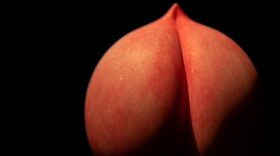Yale ornithologist Richard Prum has spent years working with students to understand the full range of colors in birds’ plumage. They use a model based on the range of colors birds can see, which includes ultraviolet colors that humans can’t see.
So, how colorful are birds to themselves?
Gabriela Venable worked on the study as an undergraduate. She said hummingbirds are special.
“They live in the fast lane, is how I would say it," Venable said. "They’ve got a heartbeat that goes up to 1,260 beats per minute. They’ve got some species that fly all the way from Mexico up to Canada. These are some tiny but fierce and mighty birds.”
Scientists have found that hummingbirds have far more colors in their plumage than any other species.
“They’re able to produce color combinations that we could never imagine. Ultraviolet yellow and ultraviolet green colors,” Venable said.
She adds that hummingbirds use their colors for social interactions. “It might be a way of saying, 'hey, look at me! I could be your next potential partner for mating displays.' Or it could be, 'hey, get out of here! This is my flower patch!'”
Prum said they can also attribute their brilliant, iridescent colors to tiny filaments in their feathers to what he calls nanostructures.
“And it turns out that this mechanism is more versatile than using plain old pigments or dyes, like most birds do, in their feathers," Prum said. "You can essentially dial in whatever color you want, or almost any color you want, by regulating the size of these nanostructures.”
Prum said this finding is a reminder that our perception only let's us see a tiny portion of the rainbow of colors in the animal kingdom.
Copyright 2022 WSHU. To see more, visit WSHU. 9(MDExNDI3NjUzMDEzNjkzMTgzNTExNDFlYQ004))




